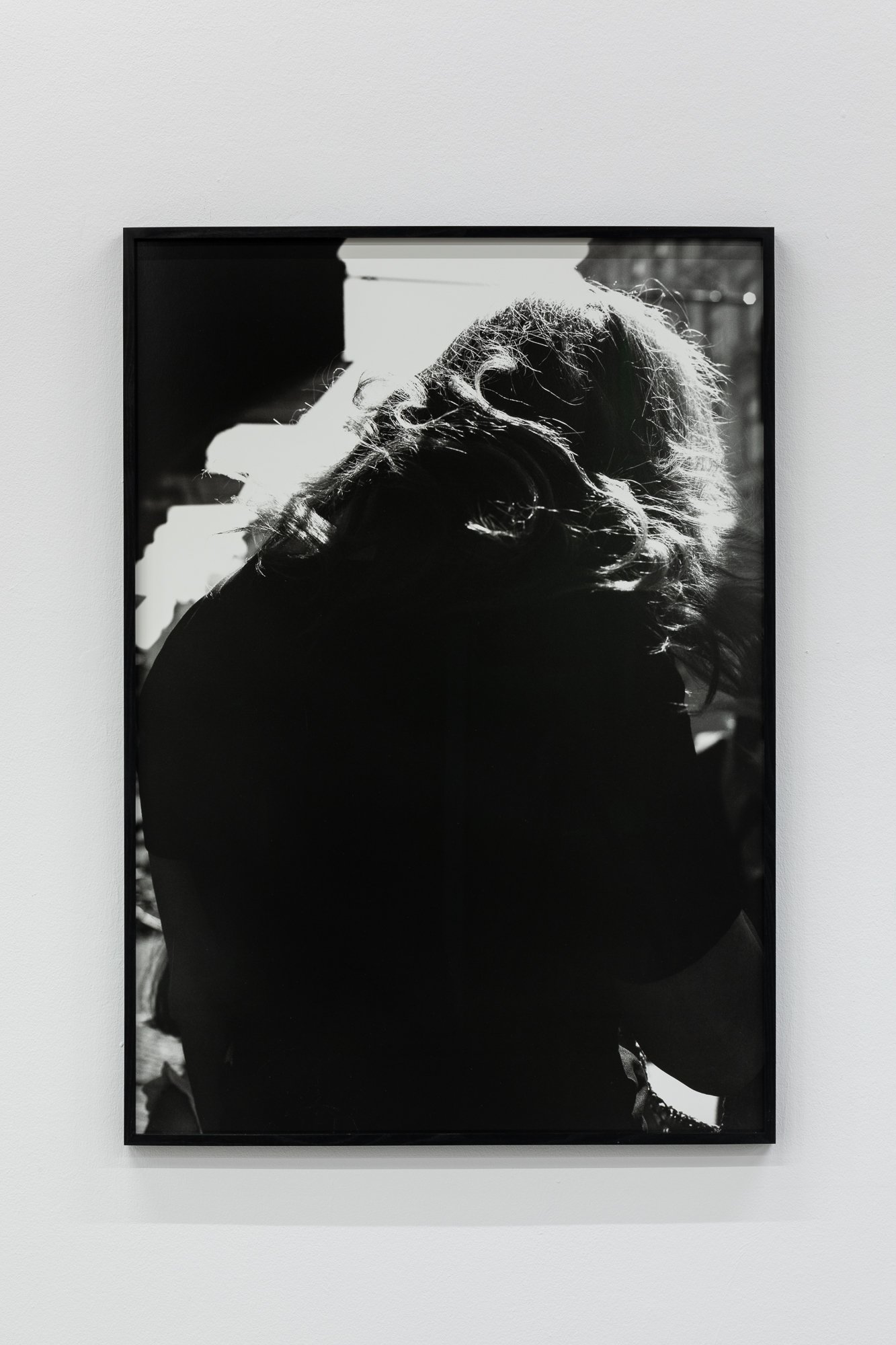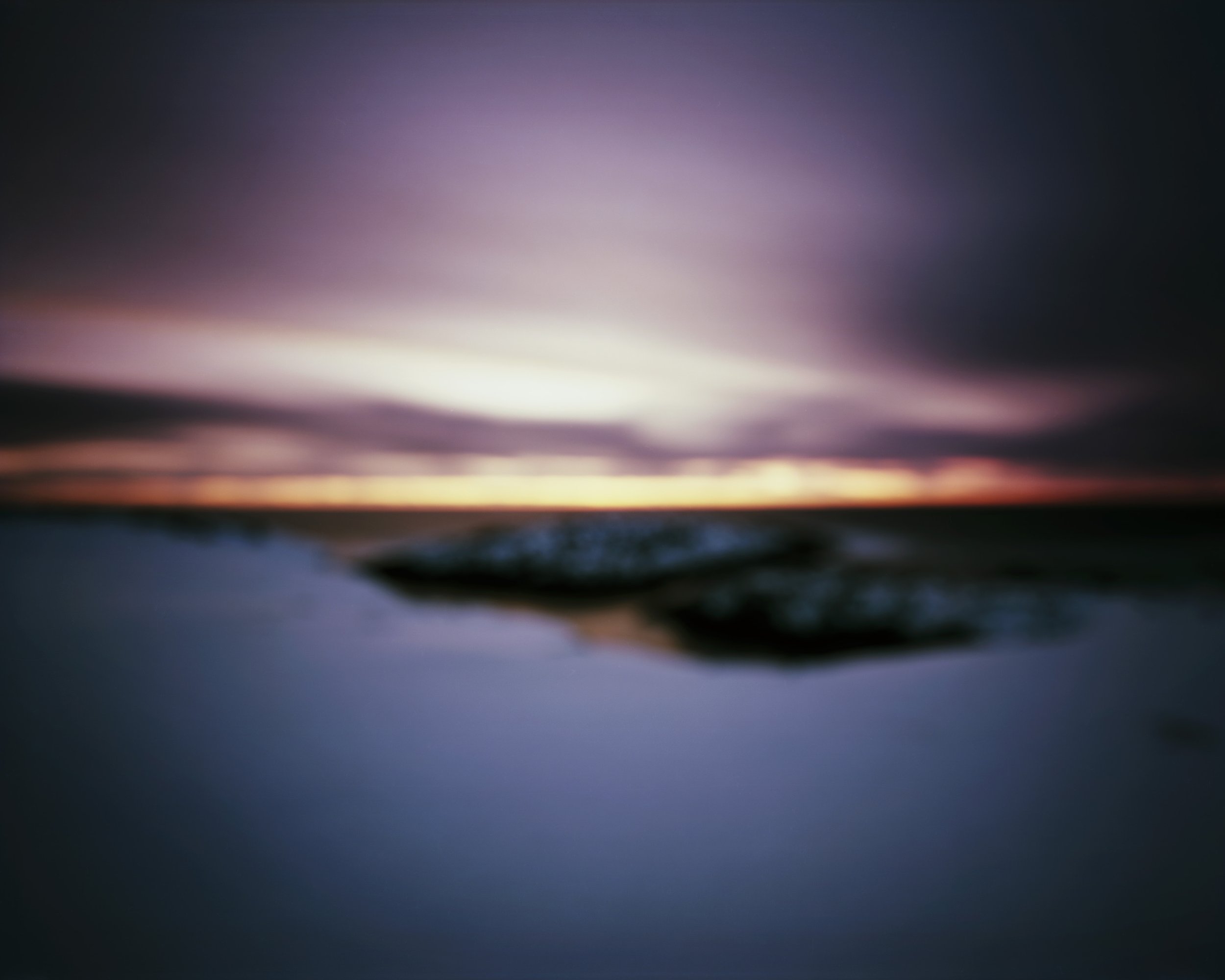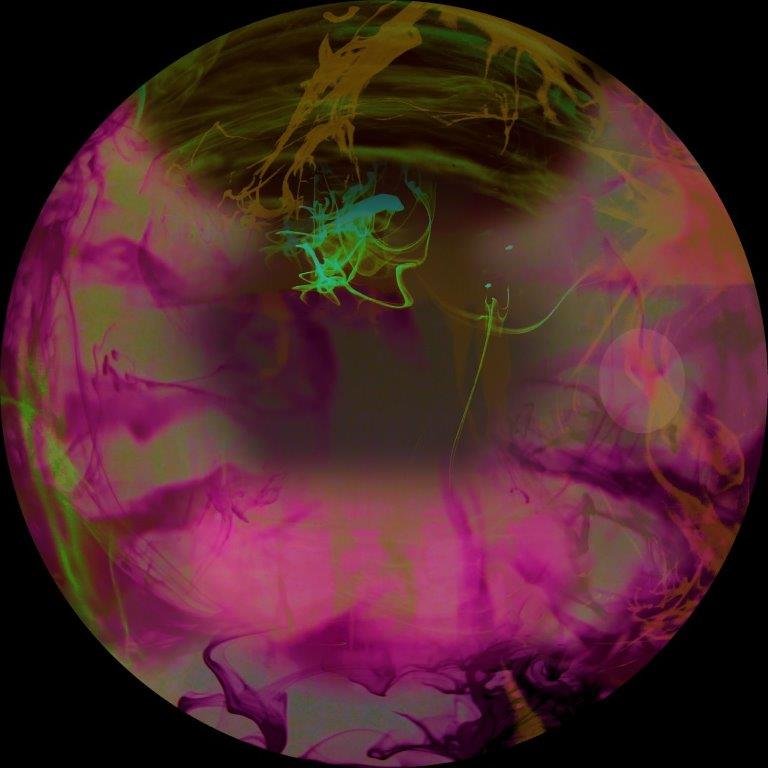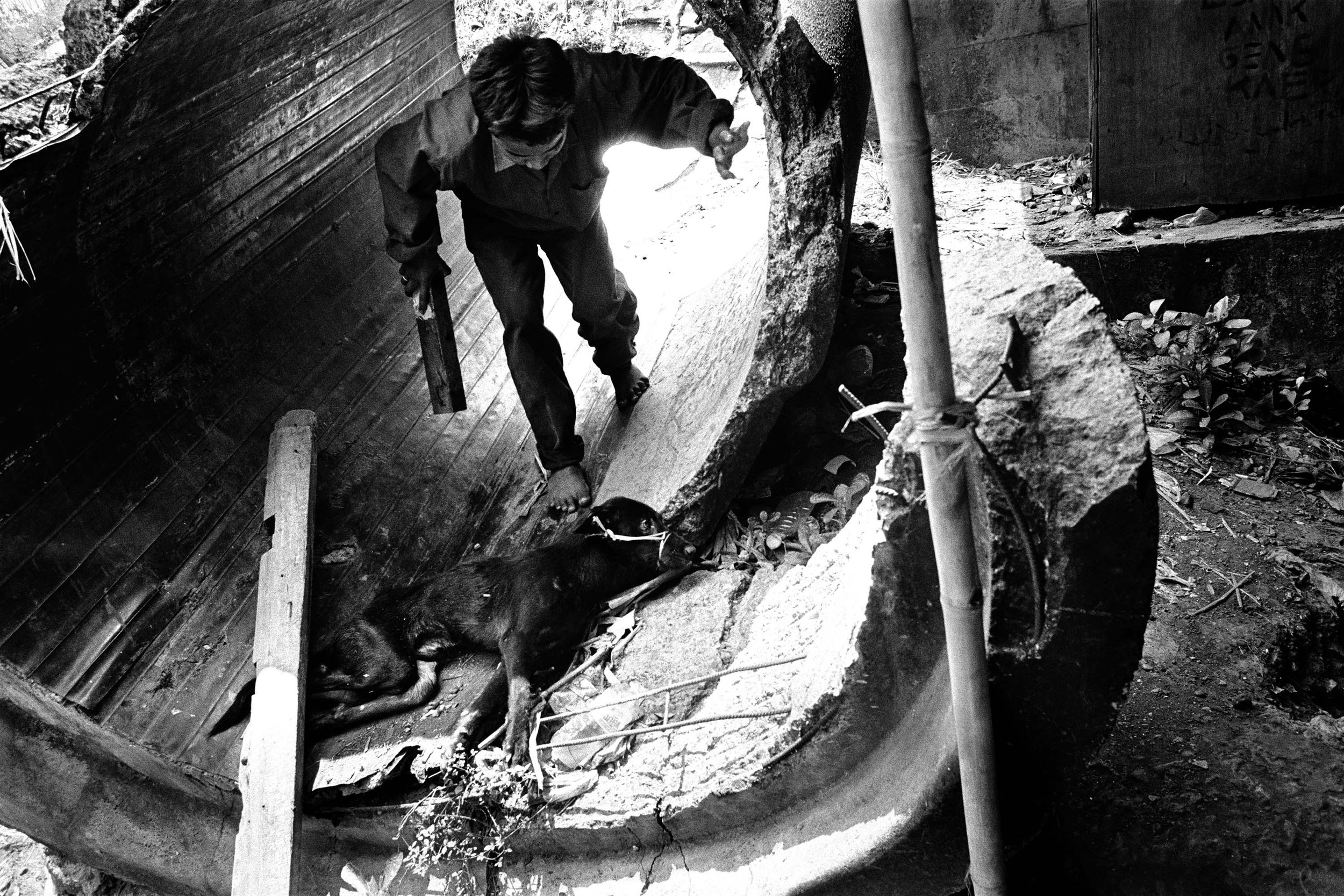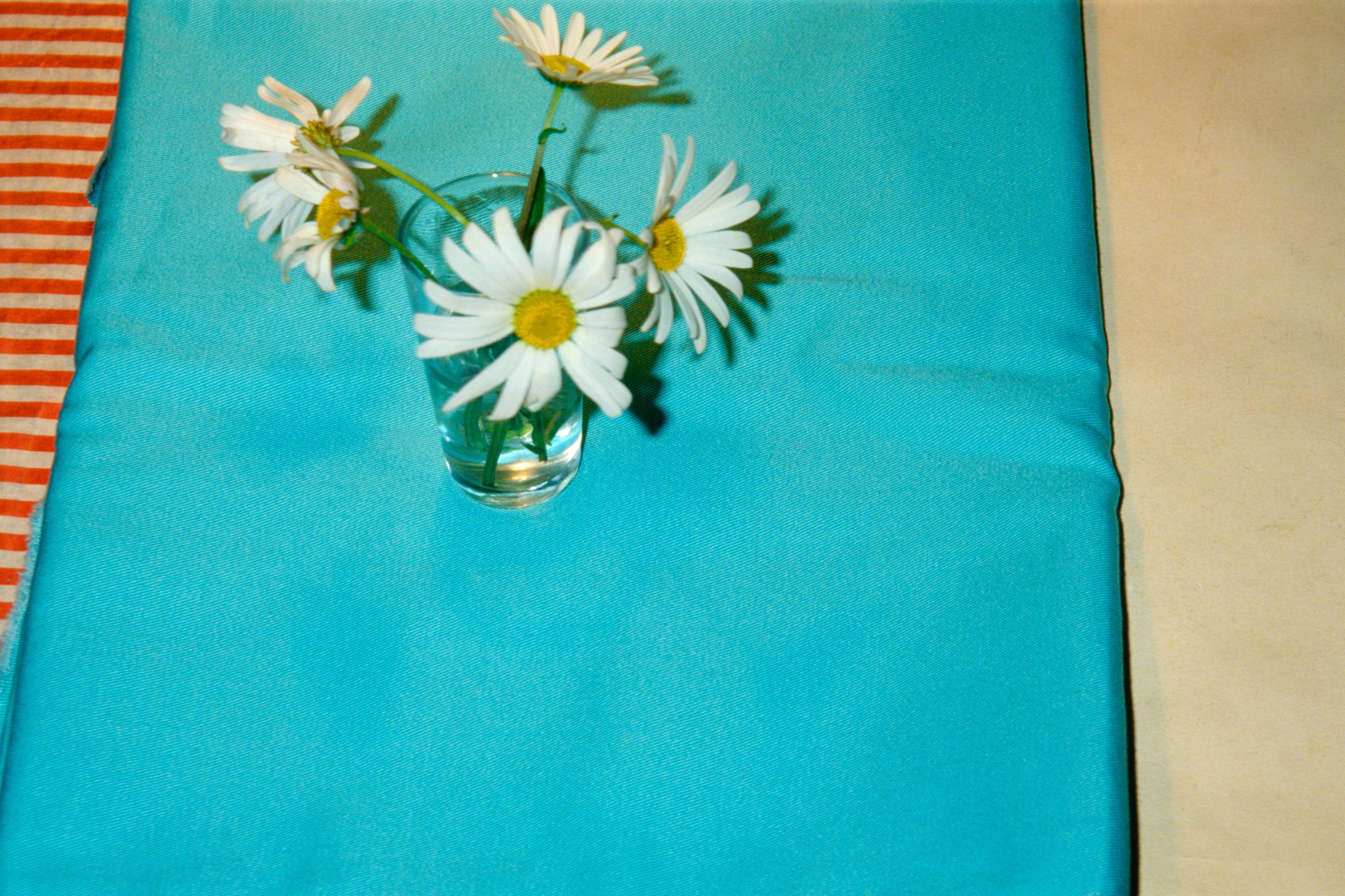Pia Zanetti ist eine Pionierin des Schweizer Fotojournalismus. Über 60 Jahre lang hat sie die Welt bereist und mit ihren Fotos und Reportagen auch aus Krisengebieten berührt und aufgerüttelt. Der neue Bildband, erschienen in der Edizioni Perferia, dokumentiert in einer fotografischen Zeitreise die Kreativität, Unerschrockenheit und Menschenliebe dieser Fotografin.
Dass eine Frau Fotografin werden wollte, war um 1960 alles andere als selbstverständlich. Pia Zanetti liess sich nicht entmutigen. Als zierliche Frau, die von den Paparazzis am Anfang belächelt wurde, ging sie ihren Weg mit viel Neugier und einer erstaunlichen Beharrlichkeit. Sie wollte die Welt erfahren, Geschichten erzählen, mit ihren Bildern die Situation von Menschen und deren unterschiedlichen Wirklichkeiten vermitteln. Pia Zanetti war eine der ersten Fotoreporterinnen der Schweiz und hat mit ihrem untrüglichen Blick für den Moment und ihrem Dranbleiben während Jahrzehnten ein herausragendes fotografisches Werk hinterlassen.
Es ist ein Lebenswerk, in dem sich immer auch die Zeitgeschichte spiegelt. Pia Zanetti interessierte sich für die politischen und gesellschaftlichen Brennpunkte der Welt, an deren Schauplätzen sie Menschen und Situationen fotografierte. Zusammen mit ihrem Mann, dem Journalisten Gerardo Zanetti, war sie in den 1960er und 1970er Jahren in ganz Europa, Südafrika, Nordamerika und Südamerika unterwegs, von wo die beiden Reportagen nach Hause schickten und in renommierten Zeitungen und Magazinen veröffentlichten.
Nach dem frühen Tod ihres Mannes schlug sich Pia Zanetti alleine durch und realisierte ihre Fotoarbeiten mit unterschiedlichen Autoren und Autorinnen. Ihre Reportagen erschienen regelmässig in der NZZ Wochenende, im Magazin des Tages Anzeigers, in der Kulturzeitschrift DU, in der Annabelle oder in der Jugendzeitschrift Spick. Aufträge für verschiedene NGO’s führten sie wiederholt in den globalen Süden, nach Indien, Laos, Bangladesch, Usbekistan, Vietnam, mach Afrika und Lateinamerika.
In ihren sozialkritischen Reportagen hatte Pia Zanetti immer auch den Blick für das Unscheinbare und Spontane, das sich abseits der grossen Schlagzeilen ereignete. Ihre Porträts von Menschen, denen sie unterwegs zufällig begegnete, sind genauso spektakulär wie ihre Bilder von Berühmtheiten wie Viviane Westwood, Ennio Morricone, Art Blakey, Bette Davis, Jim Clark, Johannes Gachnang oder Max Frisch. Dieses Interesse für die Menschen in all ihrer Vielfalt und Einzigartigkeit ist ein roter Faden, der sich durch das Lebenswerk der Fotografin zieht.
Die chronologisch angelegte Struktur des Fotobandes lädt ein zu einer fotografischen Zeitreise, geprägt von einer ungeheuren Dynamik. Sie zeigt nicht nur bekannte und unbekannte Schauplätze, Menschen und ihre Milieus, sondern vermittelt auch ein Lebensgefühl. Und lässt eine Haltung spüren, in der sich Neugier, Entdeckerlust, Respekt und Menschlichkeit wunderbar vereinen. Wie im Zeitraffer durchlaufen die Fotos dieses Buches mehr als ein halbes Jahrhundert. Dennoch möchte man mit jedem Bild die Welt ein wenig anhalten und bei ihm verweilen.
Pia Zanetti est une pionnière du photojournalisme suisse. Pendant plus de 60 ans, elle a parcouru le monde, touchant et bouleversant avec ses photos et ses reportages, y compris dans des régions en crise. Le nouveau livre de photos, paru aux Edizioni Perferia, documente dans un voyage photographique dans le temps la créativité, l'intrépidité et l'amour des gens de cette photographe.
Vers 1960, il était tout sauf évident qu'une femme veuille devenir photographe. Pia Zanetti ne s'est pas laissée décourager. Femme menue, moquée au début par les paparazzis, elle a suivi son chemin avec beaucoup de curiosité et une étonnante persévérance. Elle voulait connaître le monde, raconter des histoires, transmettre par ses photos la situation des gens et leurs différentes réalités. Pia Zanetti a été l'une des premières photoreporters de Suisse et a laissé derrière elle, pendant des décennies, une œuvre photographique exceptionnelle grâce à son regard infaillible sur l'instant et à sa persévérance.
C'est l'œuvre d'une vie, dans laquelle se reflète toujours l'histoire contemporaine. Pia Zanetti s'intéressait aux points chauds politiques et sociaux du monde, où elle photographiait des personnes et des situations. Avec son mari, le journaliste Gerardo Zanetti, elle a voyagé dans toute l'Europe, l'Afrique du Sud, l'Amérique du Nord et l'Amérique du Sud dans les années 1960 et 1970, d'où ils envoyaient des reportages chez eux et les publiaient dans des journaux et des magazines renommés.
Après le décès prématuré de son mari, Pia Zanetti s'est débrouillée seule et a réalisé ses travaux photographiques avec différents auteurs. Ses reportages sont régulièrement publiés dans le NZZ Wochenende, dans le magazine du Tages Anzeiger, dans le magazine culturel DU, dans Annabelle ou dans le magazine pour jeunes Spick. Des missions pour différentes ONG l'ont conduite à plusieurs reprises dans le Sud global, en Inde, au Laos, au Bangladesh, en Ouzbékistan, au Vietnam, en Afrique et en Amérique latine.
Dans ses reportages de critique sociale, Pia Zanetti a toujours eu un regard pour l'anodin et le spontané, qui se produisait loin des grands titres. Ses portraits de personnes rencontrées par hasard en chemin sont tout aussi spectaculaires que ses photos de célébrités comme Viviane Westwood, Ennio Morricone, Art Blakey, Bette Davis, Jim Clark, Johannes Gachnang ou Max Frisch. Cet intérêt pour les gens dans toute leur diversité et leur singularité est un fil rouge qui traverse l'œuvre de la photographe.
La structure chronologique de l'ouvrage photographique invite à un voyage photographique dans le temps, empreint d'un immense dynamisme. Elle ne montre pas seulement des lieux connus et inconnus, des personnes et leurs milieux, mais transmet également un sentiment de vie. Et fait ressentir une attitude dans laquelle la curiosité, le désir de découverte, le respect et l'humanité s'unissent à merveille. Comme en accéléré, les photos de ce livre parcourent plus d'un demi-siècle. Pourtant, chaque photo donne envie d'arrêter un peu le monde et de s'y attarder.
Pia Zanetti è una pioniera del fotogiornalismo svizzero. Da oltre 60 anni gira il mondo, toccando e scuotendo le persone con le sue foto e i suoi reportage, anche dalle aree di crisi. Il nuovo libro illustrato, pubblicato da Edizioni Perferia, documenta la creatività, l'intrepidezza e la filantropia di questa fotografa in un viaggio fotografico nel tempo.
Intorno al 1960 era tutt'altro che scontato che una donna volesse diventare fotografa. Pia Zanetti non si lasciò scoraggiare. Donna minuta, inizialmente derisa dai paparazzi, perseguì la sua carriera con grande curiosità e sorprendente perseveranza. Voleva vivere il mondo, raccontare storie, usare le sue immagini per trasmettere la situazione delle persone e le loro diverse realtà. Pia Zanetti è stata una delle prime donne fotoreporter in Svizzera e, con il suo occhio infallibile per il momento e la sua perseveranza, ha lasciato dietro di sé un'opera fotografica eccezionale che abbraccia decenni.
È il lavoro di una vita che riflette sempre la storia contemporanea. Pia Zanetti si è interessata ai luoghi politici e sociali del mondo, dove ha fotografato persone e situazioni. Insieme al marito, il giornalista Gerardo Zanetti, negli anni Sessanta e Settanta ha viaggiato in Europa, Sudafrica, Nordamerica e Sudamerica, da dove ha inviato in patria reportage pubblicati su noti giornali e riviste.
Dopo la prematura scomparsa del marito, Pia Zanetti si è gestita da sola e ha realizzato il suo lavoro fotografico con vari autori. I suoi reportage sono apparsi regolarmente sulla NZZ Wochenende, sulla rivista Tages Anzeiger, sulla rivista culturale DU, su Annabelle e sulla rivista giovanile Spick. Gli incarichi per varie ONG l'hanno portata più volte nel Sud globale, in India, Laos, Bangladesh, Uzbekistan, Vietnam, Africa e America Latina.
Nei suoi reportage socialmente critici, Pia Zanetti ha sempre avuto un occhio di riguardo per le cose poco appariscenti e spontanee che accadevano lontano dai grandi titoli dei giornali. I suoi ritratti di persone incontrate per caso lungo la strada sono altrettanto spettacolari delle sue foto di celebrità come Viviane Westwood, Ennio Morricone, Art Blakey, Bette Davis, Jim Clark, Johannes Gachnang e Max Frisch. Questo interesse per le persone in tutta la loro diversità e unicità è un filo conduttore che attraversa il lavoro della fotografa.
La struttura cronologica del volume fotografico invita a un viaggio fotografico nel tempo, caratterizzato da un enorme dinamismo. Non solo mostra luoghi, persone e ambienti noti e sconosciuti, ma trasmette anche un atteggiamento nei confronti della vita. E trasmette un atteggiamento in cui la curiosità, il desiderio di scoprire, il rispetto e l'umanità sono meravigliosamente uniti. Come in un rapido movimento, le foto di questo libro attraversano più di mezzo secolo. Tuttavia, ogni immagine fa venire voglia di fermare un po' il mondo e di soffermarsi su di esso.
Pia Zanetti is a pioneer of Swiss photojournalism. For over 60 years, she has traveled the world, touching and shaking people up with her photos and reports, even from crisis areas. The new illustrated book, published by Edizioni Perferia, documents this photographer's creativity, fearlessness and love of humanity in a photographic journey through time.
Around 1960, it was anything but a matter of course that a woman wanted to become a photographer. Pia Zanetti was not discouraged. A petite woman who was initially ridiculed by the paparazzi, she pursued her career with great curiosity and astonishing perseverance. She wanted to experience the world, tell stories, use her pictures to convey the situation of people and their different realities. Pia Zanetti was one of the first female photojournalists in Switzerland and, with her unerring eye for the moment and her perseverance, has left behind an outstanding photographic oeuvre spanning decades.
It is a life's work that always reflects contemporary history. Pia Zanetti was interested in the political and social hotspots of the world, where she photographed people and situations. Together with her husband, the journalist Gerardo Zanetti, she traveled throughout Europe, South Africa, North America and South America in the 1960s and 1970s, from where they sent reports home and published them in renowned newspapers and magazines.
After the early death of her husband, Pia Zanetti managed on her own and realized her photographic work with various authors. Her reportages appeared regularly in the NZZ Wochenende, in the Tages Anzeiger magazine, in the cultural magazine DU, in Annabelle and in the youth magazine Spick. Assignments for various NGOs have repeatedly taken her to the Global South, India, Laos, Bangladesh, Uzbekistan, Vietnam, Africa and Latin America.
In her socially critical reportages, Pia Zanetti always had an eye for the inconspicuous and spontaneous things that happened away from the big headlines. Her portraits of people she met by chance along the way are just as spectacular as her pictures of celebrities such as Viviane Westwood, Ennio Morricone, Art Blakey, Bette Davis, Jim Clark, Johannes Gachnang and Max Frisch. This interest in people in all their diversity and uniqueness is a common thread that runs through the photographer's life's work.
The chronological structure of the photo volume invites you on a photographic journey through time, characterized by a tremendous dynamism. It not only shows known and unknown locations, people and their milieus, but also conveys an attitude to life. And it conveys an attitude in which curiosity, the desire to discover, respect and humanity are wonderfully united. As if in fast motion, the photos in this book run through more than half a century. Nevertheless, each picture makes you want to stop the world a little and linger with it.
(Text: Pirmin Bossart)






